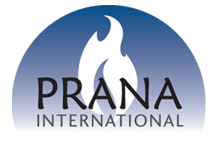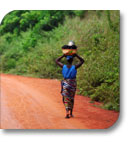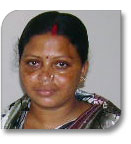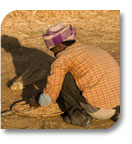
|
“Microfinance is the supply of loans, savings, and other basic financial services to the poor. People living in poverty, like everyone else, need a diverse range of financial instruments to run their businesses, build assets, stabilize consumption, and shield themselves against risks. Financial services needed by the poor include working capital loans, consumer credit, and savinsgs, pensions, insurance, and money transfer services”.
-CGAP (Consultative Group to Assist the Poor)
|
|

Comprehensive impact studies have demonstrated that:
| - |
Microfinance helps very poor households meet basic needs and protect against risks; |
| - |
The use of financial services by low-income households is associated with improvements in household economic welfare and enterprise stability or growth; |
| - |
By supporting women’s economic participation, microfinance helps to empower women, thus promoting gender-equity and improving household well-being; |
| - |
For almost all significant impacts, the magnitude of impact is positively related to the length of time that clients have been in the program. |
-UNCDF
Poverty is multi-dimensional. By providing access to financial services, microfinance plays an important role in the fight against the many aspects of poverty. For instance, income generation from a business helps not only the business activity expand but also contributes to household income and its attendant benefits on food security, children's education, etc. Moreover, for women, who, in many contexts, are secluded from public space, transacting with formal institutions can also build confidence and empowerment.
-Microfinancegateway |




